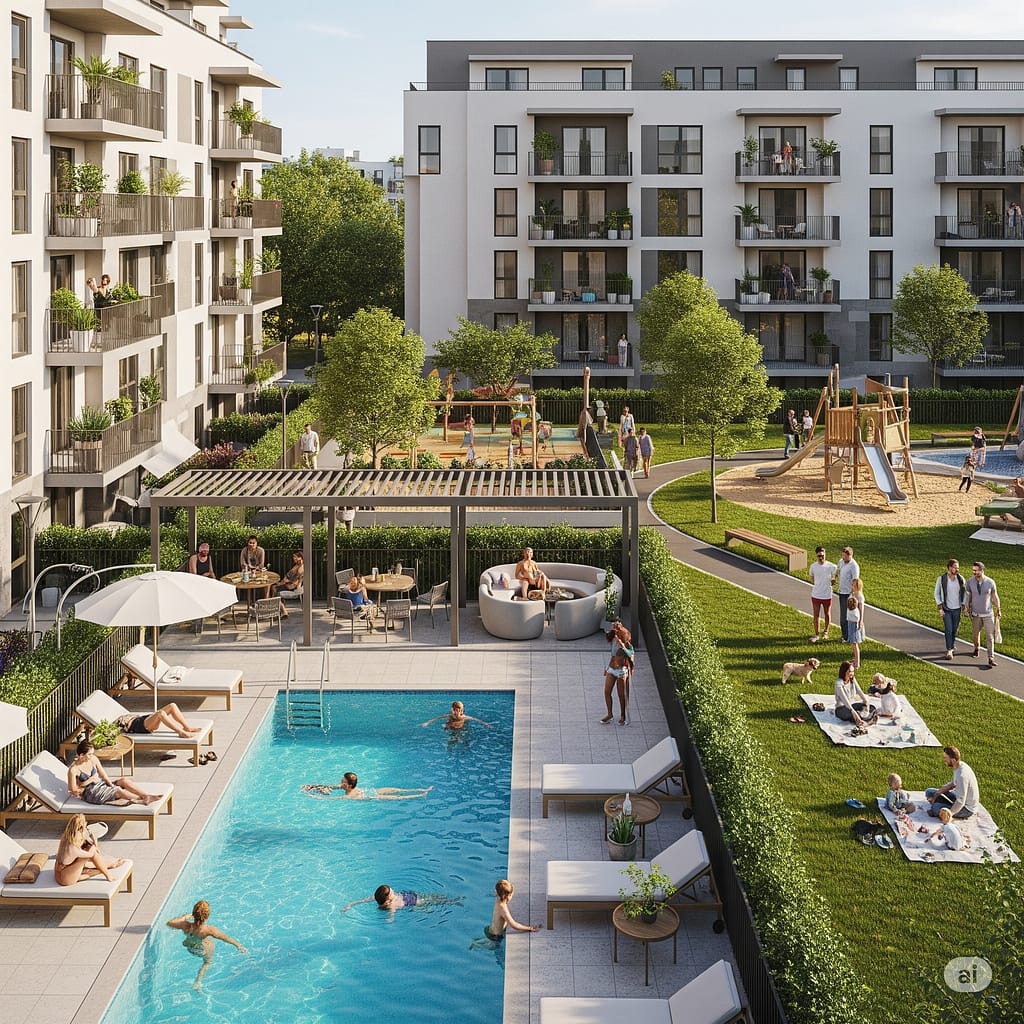
Investing in multifamily real estate is about more than just acquiring a property; it’s about building a community. Apartment complexes are the bedrock of neighborhoods, providing essential housing for individuals and families. For investors, they represent one of the most stable and scalable avenues for building long-term wealth.
The consistent demand for housing, combined with the efficiency of managing multiple units under one roof, makes apartment buildings a top-tier commercial real estate asset class. However, the key to unlocking this potential lies in securing the right financing tailored to your specific investment strategy.
The Power of Multifamily Investing
Apartment buildings are highly sought after by investors and lenders alike for several reasons:
- Durable Cash Flow: With income spread across multiple tenants, your cash flow is more stable and resilient. A vacancy in one unit won’t halt your entire revenue stream, as it would with a single-family rental.
- Economies of Scale: It is far more efficient to manage a 30-unit apartment building than 30 separate single-family homes. Maintenance, property management, and capital expenditures are all centralized, reducing per-unit costs.
- Strong and Consistent Demand: People will always need a place to live. This fundamental need creates a durable demand for rental units that can weather economic downturns better than many other types of commercial real estate.
Navigating Your Financing Options
The financing landscape for apartment buildings is robust, with several excellent options available:
- Government-Backed Agency Loans (Fannie Mae & Freddie Mac): Considered the gold standard for stabilized multifamily properties, these loans offer some of the best terms on the market, including long-term fixed interest rates (up to 30 years), high leverage, and non-recourse structures that protect your personal assets. They are ideal for experienced investors with strong properties.
- Conventional Bank Loans: Local and national banks are very active in lending on apartment buildings. They offer a wide range of loan products and can be more flexible on certain deal points, making them a great option for newer investors or unique properties.
- Bridge Loans: This is the perfect tool for a value-add strategy. If you’re buying an older, underperforming complex with a plan to renovate units, improve management, and increase rents, a short-term bridge loan is essential. It provides the capital for both the acquisition and the renovation, allowing you to execute your business plan before refinancing into a long-term, permanent loan once the property is stabilized.
- FHA/HUD Loans: These government-insured loans are excellent for the construction, substantial rehabilitation, or acquisition of apartment complexes. They offer very high leverage and long amortization periods but come with a more extensive and lengthy application process.
What Lenders Look For
When underwriting an apartment loan, lenders focus primarily on the property’s ability to generate income. They will zero in on:
- Debt Service Coverage Ratio (DSCR): The property’s Net Operating Income (NOI) must be sufficient to cover the proposed mortgage payment, typically by a ratio of at least 1.25x.
- The Rent Roll and Occupancy History: Lenders will analyze the current list of tenants, lease terms, and the property’s historical vacancy rates to ensure consistent performance.
- The Borrower’s Experience: A demonstrated track record of successfully owning and managing similar multifamily properties is highly valued.
Investing in an apartment complex is a powerful way to generate wealth and make a positive impact. By understanding the financing options and partnering with an expert who can navigate the market, you can secure the right capital to build your portfolio and your community.

